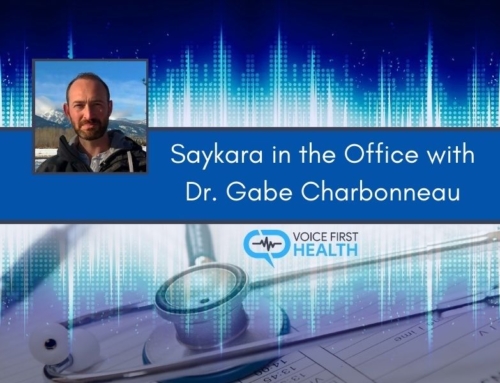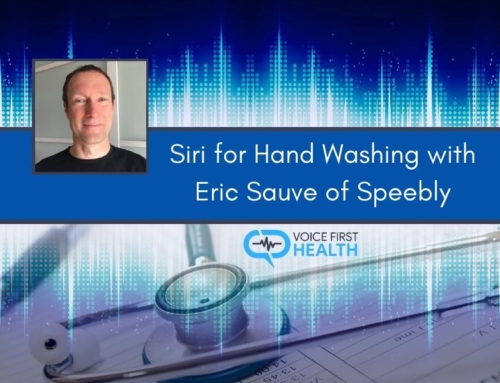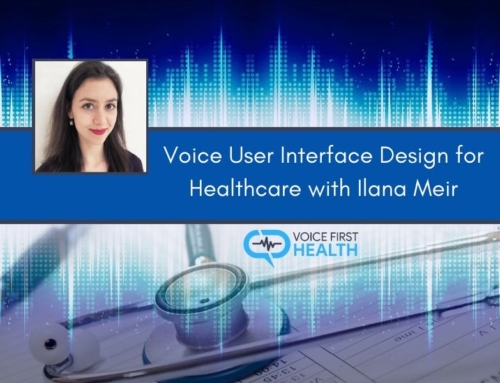VFH Episode 16
In this episode, Teri welcomes Erum Azeez Khan, the co-founder and CEO of SoundMind.
SoundMind is a voice technology company that is a leader in creating voice applications for the aging population, particularly those living in senior living campuses. Erum will talk about the ways that they are changing the experiences of residents living in those campuses and the aging population in general.
Key points from Erum!
- Using voice first technology to serve the aging population in a way that is much more frictionless and seamless so that their lives can be more enjoyable, comfortable and stress-free.
SoundMind
- Their mission is to empower older adults, assist caregivers and strengthen intergenerational relationships.
- They have an Alexa skill called “Memory Lane” that connects users to the past using archival historic content. Asking for a year calls up a short description and audio recording of a defining event from that year.
- They carried out focus groups and user testing to learn about what struggles that older adults face while using existing/traditional technologies like smartphones, iPads, and computers. They taught them how Alexa works and they caught on very quickly.
- A conversation Erum had with an elderly resident on how they can get an Alexa device for themselves made her realize that it would be very difficult for the older adults to procure the devices, create Amazon accounts, download the necessary apps, sync the devices to their Wi-Fi and configure the settings as necessary. This prompted SoundMind to create their main products, “Connect the Dots”, which is a multi-Alexa manager for senior living.
- Connect the Dots is a way for administrators and caregivers at senior living facilities to manage multiple accounts and devices throughout a facility.
Connect the Dots Use Case Scenarios
There is a dashboard with all kinds of skills linked to it. The main features include:
- The activities calendar: The activities director can upload their calendar into the Connect the Dots dashboard and it’s accessible by any device in the facility. Each resident also has their personal calendar that is linked to the device in their room so they can hear what’s happening in the community, and also listen to what’s happening in their personal lives. Currently, assisted living facilities print out their calendars by month. Within a couple of days, events get canceled or postponed which makes the paper calendar go stale. An activities director being able to quickly say, “Alexa, cancel event” on the device that they are using enables them to instantly give update information to everyone in the facility.
- Menus: They are accessible on the Connect the Dots dashboard. Residents can ask what’s for dinner.
- Calling: It’s also synced to Connect the Dots. Every device has a unique number attached to it so residents can make outbound calls. A resident can have their top five contacts, multiples names for a single contact, and there is an intercom system for residents to call any administrative/operations section of the facility.
Use Scale
- SoundMind has so far had 400 deployments of devices across five senior living facilities.
- They are taking the time to understand where they can add the most value in the continuum of care.
- They are looking into independent living, assisted living, skilled nursing facilities and home health care.
- Home healthcare is very popular and they are gearing towards getting more market share there. They are currently piloting with a few home healthcare organizations to see which features would be more beneficial for a home health care agency.
Impact
- SoundMind is changing people’s lives, for example, enabling older adults with hearing and sight problems to ask for any information they need.
- They provide the devices, configure them, provide training, provide guides and also train the staff at the facilities. This helps the end users to learn how to use a voice assistant in helping them through their daily lives.
The Meaning of Voice First Health in the Context of what SoundMind Does
- They look at how much caregivers can do through voice without having to go to the screen because when they look at a screen, their attention is directed away from their patient or the resident under their care.
- They focus on human-centric design to make connections stronger.
- Voice First helps strengthen relationships. It’s a way to stay engaged with other people and the tasks at hand. It’s also a way to create transparency because it’s a multiplayer experience.









